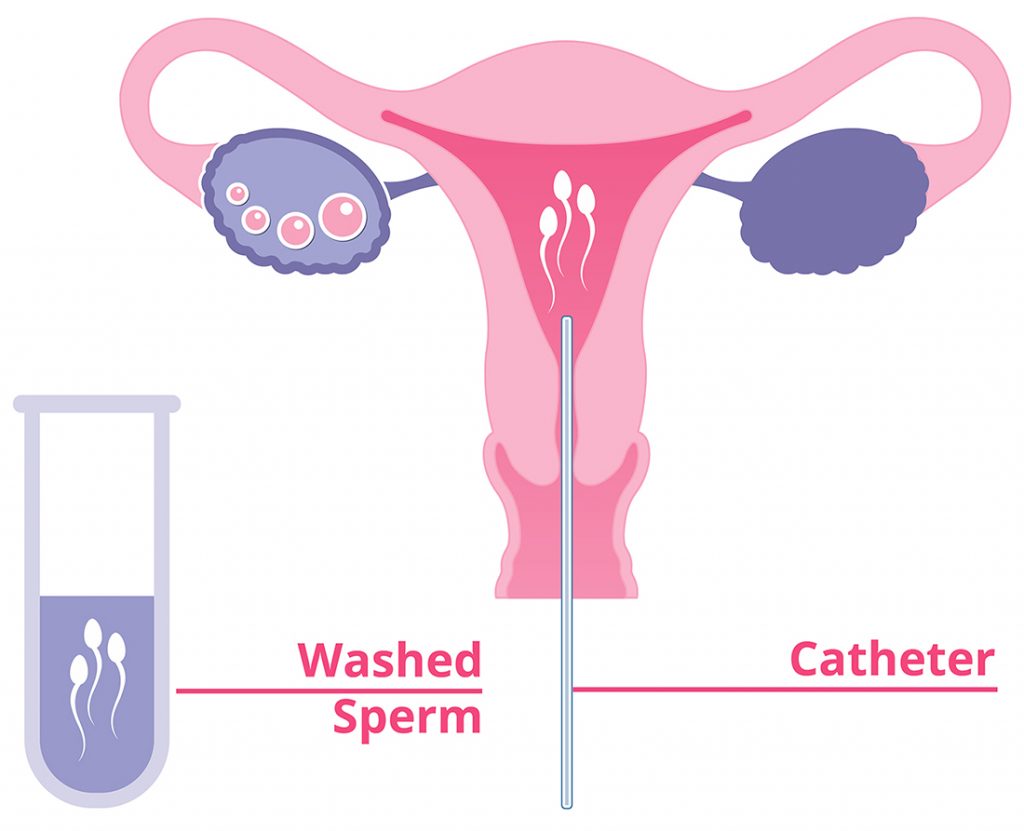IUI is frequently overused in fertility treatment and, in conjunction with fertility medications, can lead to a significantly increased risk for multiple births.
Intrauterine Insemination
Intrauterine Insemination (IUI): Procedure, Risks, Success Rates
What Is IUI?
IUI (intrauterine insemination) is often the first form of fertility intervention for a patient to consider. IUI is a fertility treatment that uses a catheter to place a number of washed sperm directly into the uterus. The sperm then quickly reach the fallopian tubes where fertilization of the egg should take place. IUI treatment is most often used for patients with open fallopian tubes and normal sperm often in combination with fertility medications such as Clomid or FSH injections.

IUI vs. IVF
For people with unexplained infertility it may be reasonable to consider Clomid and IUI for 2 to 3 cycles before moving on to IVF. FSH/IUI may yield slightly higher pregnancy rates and may be a better choice for women over 40 and those with diminished ovarian reserve or who do not respond well to Clomid. However, FSH carries a much higher risk than Clomid for ovarian hyperstimulation and multiple pregnancy, especially HOM – high order multiple pregnancy – triplets or more. Greater than 80% of triplet pregnancies in this country are a result of FSH/IUI rather than IVF. For most patients who fail lesser treatments, the use of FSH – (follicle stimulating hormone – injectable gonadotropins like Follistim, Gonal F and Menopur) should be used during an IVF cycle where ovarian hyperstimulation and multiple pregnancy risks can be better controlled.
When looking at IUI as a means of fertility treatment several factors should be considered. Though IUI procedure is a less expensive treatment as compared to IVF, its success rates are also significantly lower. Most studies show success rates between 5 and 15% for IUI, while IVF pregnancy rates for many patients are 5 to 10 times higher, making the overall cost per live birth much lower for IVF than for IUI.
If you have a cap on your fertility benefits and are looking to maximize your pregnancy potential from your first attempt, going straight to IVF may make more sense for you. This is certainly a complex decision that is impacted by multiple factors and one you should discuss with your IRMS Physician as well as your IRMS Financial Counselor. Our focus is to help you maximize your insurance benefit and achieve your goal of having a healthy baby as quickly as possible. The IRMS team has many years of experience assisting patients to be as informed as possible about their individual situation both medically and from an insurance perspective. Our job is to help you work through these complex decisions. Although we know the statistics and numbers quite well, you need to feel comfortable with the plan. Ultimately these decisions are up to you.
Preparing For IUI Treatment
Whether preparing for IUI or IVF the initial work-up is very similar. At your new patient appointment, you and your partner will be given a checklist of items to complete prior to initiation of treatment. One of those checklist items is an HSG (hysterosalpinogram) to determine if your fallopian tubes are open. It is required that your tubes are open for an IUI procedure to be successful as fertilization happens in the tubes. Once your checklist items are complete you will be monitored for Day 1 of your next menstrual cycle and then come in for Day 3 bloodwork. We will be monitoring you for signs of oncoming ovulation and will then let you know what day to come in for your IUI. We now do what’s called back-to-back IUI’s when possible where we have our patients come in for an IUI for 2 consecutive days to help increase the chances of pregnancy.
In terms of male partners, we may use a combination of both fresh and frozen sperm samples in the course of your IUI treatment. If you’re using Donor Sperm your sample will already be here in advance of your cycle and remain frozen until the actual day of your IUI.
The actual IUI procedure takes about 5-10 minutes time and is an in-office procedure here at IRMS.


